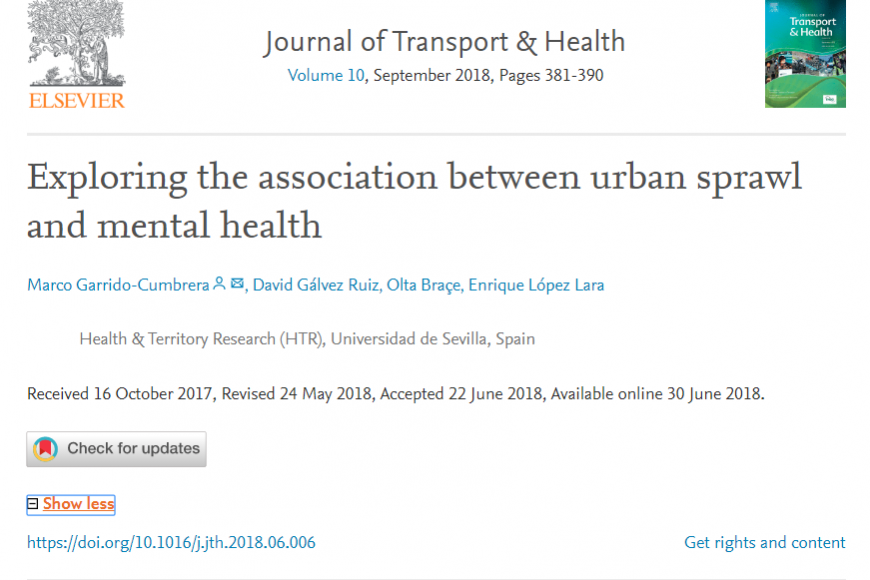Exploring the association between urban sprawl and mental health
Marco Garrido-Cumbrera, David Gálvez Ruiz, Olta Braçe. Enrique López Lara.
Journal of Transport & Health. 2018. 10:381-390.
Background
Mental disorders are closely associated with poverty, poor education, unemployment, social isolation/exclusion and major life events, but little is known about the influence of the built environment. The aim of this study is to determine whether urban sprawl is associated with self-reported psychological distress.
Methods
Mairena del Aljarafe, a municipality of 44,388 inhabitants located in the Seville Metropolitan Area, was divided into 10 homogeneous areas. Sprawl levels were then calculated for each of the areas using an aggregated sprawl index composed of six dimensions: population density, net residential density, coverage ratio, land use types, percentage of residential land use, and average year of construction. Weights were assigned to each indicator and the aggregated sprawl index was calculated using the Choquet Integral, an aggregation operator that combines interactions between variables. Information on mental health was taken from the 2015 Commuting, Daily Habits and Urban Health Survey that included the 12-item General Health Questionnaire (GHQ-12) as a screening tool to detect those at risk of mental health problems. Spearman’s rho test, which is suitable for small samples (of only 10 areas), was used to determine the possible association between sprawl levels and psychological distress.
Results
The results show that areas with a lower sprawl level show greater risk of mental health problems (GHQ-12), and those living in areas of medium sprawl present better mental health, followed by those in areas with higher sprawl level.
Conclusions
Urban sprawl levels have not been shown to be a significant risk factor for mental health problems, since the population living in more sprawling areas presents a lower score on psychological distress. According to our research, urban sprawl is linked to job status and, as fact, differences in risk of poor mental health at different sprawl levels could be a consequence of job status.
Keywords
Urban sprawl, Built environment, Urban design, Mental health
Link to the article:








